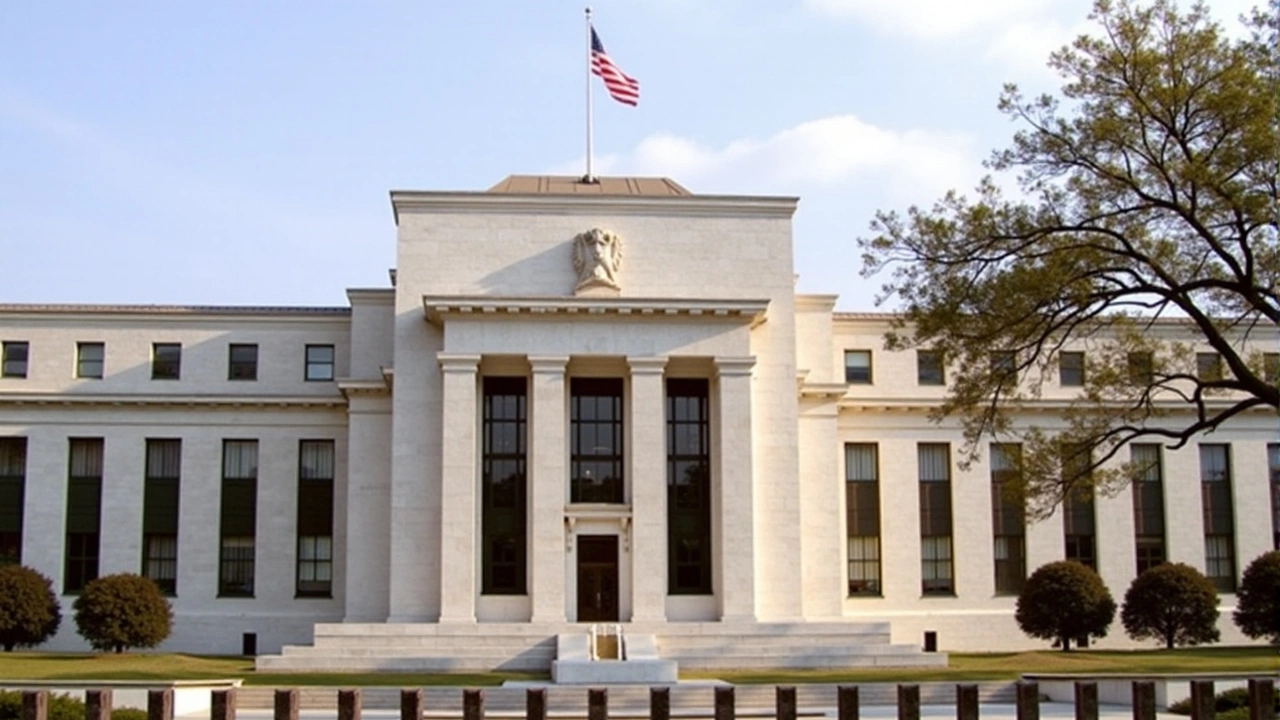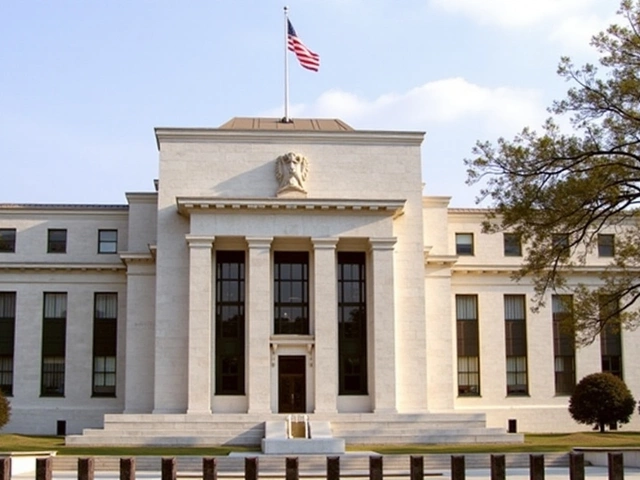Federal Reserve Maintains Interest Rates Amid Economic Dynamics and Political Challenges

Federal Reserve's Interest Rate Decision
The Federal Reserve, in its first Federal Open Market Committee (FOMC) meeting of 2025 held on January 29, decided to leave interest rates unchanged, maintaining them at 4.25% to 4.5%. This decision reflects a response to a tapestry of economic elements beyond political pressure, despite outspoken demands from President Donald Trump for immediate rate cuts. The topic of interest rates is significant since they are a key tool used by the Federal Reserve to manage economic stability and growth.
U.S. economic indicators presently showcase a mixed picture of stability. Employment rates have begun to stabilize after significant volatility in the post-pandemic landscape, with the labor market finding its footing again. Hiring patterns show consistency, supporting an economic growth trajectory currently near 2.5%. These figures suggest a healthy economy, albeit one that still faces significant hurdles. A key challenge is inflation, which remains persistently above the Fed's preferred 2% target.
Chairman Jerome Powell reiterated the Federal Reserve's stance that its decisions are dictated by concrete economic indicators and fiscal policy considerations, rather than the swirling political narratives often spotlighted in the press. Powell's statement reflected the institution's mandate to maintain its independence while diligently pursuing maximum employment and price stability. In his words, “The FOMC’s policy actions are influenced by various factors, particularly economic indicators and fiscal policies, not just political narratives." This underlines the delicate balance the Fed must strike between the economic realities it faces and the political pressures exerted upon it.
Political Pressures and Historical Context
President Donald Trump, fresh from a re-election campaign, has been vocal about his dissatisfaction with current interest rates, asserting his belief in the need for immediate reductions. His comments signal a wider historical context where U.S. Presidents have often clashed with central bank leaders over monetary policy, reminiscent of earlier tensions seen with Presidents Harry Truman, Lyndon B. Johnson, and Richard Nixon. Each instance highlights the recurring theme of political influence clashing with economic stewardship.
Trump's rhetoric further inflames an already complex debate about the roles and responsibilities of government and independent entities like the Federal Reserve in determining monetary policy. His statement, "I'll demand the interest rates drop immediately, as I know [them] much more intelligently than the current leadership at the Fed," underscores this contentious dialogue. While the President's perspective appeals to immediate political gain, the Fed ensures that its long-term vision for economic stability is preserved, a process that involves careful analysis and cautious incremental adjustments.
Inflation Concerns and Economic Projections
Despite economic momentum, inflation remains a stubborn adversary in the Fed's pursuit of economic equilibrium. Analysts note that inflationary pressures are compounded by various factors, including proposed policy changes like Trump's aggressive deportation plans, which might exacerbate labor shortages. According to Rabobank's Senior Macro Strategist Benjamin Picton, "Up to 1 million workers could vanish from the labor force, posing significant inflationary pressures." Such predictions add a layer of complexity to the Fed's task as it navigates future policy directions.
Economists are divided about the pathway forward, with many emphasizing the necessity of standing firm on interest rates in the face of potential inflationary disruptions and broader labor market dynamics. Deutsche Bank's Chief U.S. economist, Matthew Luzzetti, shared that “We expect the Fed to maintain its current stance, providing limited insights about future policy shifts during today's meeting. The broader signals should confirm the consensus of holding rates steady for now.” This consensus indicates a focus on stabilizing economic elements without precipitating swift or unpredictable changes that could upset market confidence.
The Fed's Quantitative Tightening Strategy
The Federal Reserve's balanced approach is further highlighted by its commitment to quantitative tightening, an integral aspect of its monetary policy that involves allowing large amounts of Treasuries and mortgage-backed securities to mature without reinvestment. This strategy is critical in the broader effort to regulate monetary supply and influence the economy's underlying framework.
As these securities mature, long-term bond yields and guidance on future monetary operations stand as pivotal considerations for market participants. Powell's forthcoming pronouncements on adjustments to these monetary instruments will play a central role as government economic conditions evolve. The next meeting of the FOMC, scheduled for March 18-19, 2025, will likely provide further insights and allow for comprehensive evaluation based on the intervening economic data.
Overall, the Federal Reserve faces the dual challenge of stabilizing inflation while fostering growth, ensuring policy decisions are informed by economic signals rather than the clamor of political demands. The decisions made in these meetings carry substantial weight, not just for financial markets, but for the global economy at large, illustrating the immense responsibility shouldered by Powell and the committee. The market will keenly watch future developments, always in anticipation of how these decisions will shape the economic landscape.
